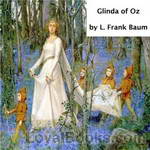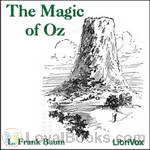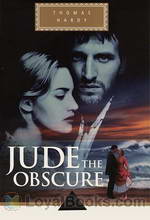|
Books Should Be Free Loyal Books Free Public Domain Audiobooks & eBook Downloads |
|
|
Books Should Be Free Loyal Books Free Public Domain Audiobooks & eBook Downloads |
|
Top Authors |
|---|
|
Book type:
Sort by:
|
By: L. Frank Baum (1856-1919) | |
|---|---|
 Glinda of Oz
Glinda of Oz
Glinda of Oz is the fourteenth Land of Oz book and is the last one written by the original author L. Frank Baum, although the series was continued after his death by several other authors. Dorothy and Ozma discover that a war is brewing in a distant and unexplored part of Oz, between two mysterious races, the Flatheads and the Skeezers. The girls set out to try to prevent the fighting, not knowing what dangers await them. | |
 The Magic of Oz
The Magic of Oz
L. Frank Baum’s last beloved Oz book before his death, this story deals with the discovery of a powerful magic word by a young boy from Oz, who immediately is plunged head-first into adventure through his discovery. | |
 Rinkitink in Oz
Rinkitink in Oz
Rinkitink in Oz is the tenth book in the Oz series written by L. Frank Baum, first published in 1916. It was originally written in 1905 as a stand alone fantasy work and subequently rewritten as an Oz book. Therefore, most of the action takes place outside of Oz in neighboring fairy countries. It tells the story of Prince Inga’s quest to rescue his parents from captivity after his island home is ravaged by enemies. With the help of three magical pearls and the more dubious assistance of the excessively... | |
 Mary Louise
Mary Louise
The Bluebird Books is a series of novels popular with teenage girls in the 1910s and 1920s. The series was begun by L. Frank Baum using his Edith Van Dyne pseudonym, then continued by at least three others, all using the same pseudonym. Baum wrote the first four books in the series, possibly with help from his son, Harry Neal Baum, on the third. The books are concerned with adolescent girl detectives— a concept Baum had experimented with earlier, in The Daring Twins (1911) and Phoebe Daring (1912)... | |
 The Tin Woodman of Oz
The Tin Woodman of Oz
The Tin Woodman of Oz is the twelfth Land of Oz book written by L. Frank Baum and was originally published on May 13, 1918. The Tin Woodman is unexpectedly reunited with his Munchkin sweetheart Nimmie Amee from the days when he was flesh and blood. This was a backstory from The Wizard of Oz. | |
 The Sea Fairies
The Sea Fairies
In 1910, Baum hoped to end the Oz series and follow with a new series about a little girl named Trot and her sailor companion, Cap’n Bill. The Sea Fairies (1911) was the first book in the projected series and took Trot and Cap’n Bill under the sea where they had adventures with mermaids and other fantastic creatures. It was followed by Sky Island (1912) and then Baum returned to the Oz titles. He brought Trot and Cap’n Bill to Oz in the Scarecrow of Oz (1915). | |
 Aunt Jane's Nieces
Aunt Jane's Nieces
Jane Merrick is a wealthy, elderly, difficult invalid woman who is preparing for her approaching death. In her youth, she inherited her money and estate from her fiancé, Thomas Bradley, who died before their wedding took place. With no children of her own, she calls for her three teenage nieces to visit her, so she can decide who will inherit her estate. They are Louise Merrick, Elizabeth De Graf, and Patsy Doyle, children of Jane’s younger brother and sisters. Each of the three cousins is a different type. | |
 Mary Louise Solves a Mystery
Mary Louise Solves a Mystery
The Bluebird Books is a series of novels popular with teenage girls in the 1910s and 1920s. The series was begun by L. Frank Baum using his Edith Van Dyne pseudonym, then continued by at least three others, all using the same pseudonym. Baum wrote the first four books in the series, possibly with help from his son, Harry Neal Baum, on the third. The books are concerned with adolescent girl detectives— a concept Baum had experimented with earlier, in The Daring Twins (1911) and Phoebe Daring (1912)... | |
 The Patchwork Girl of Oz
The Patchwork Girl of Oz
An unlucky Munchkin boy named Ojo must travel around Oz gathering the ingredients for an antidote to the Liquid of Petrifaction which has turned his beloved uncle Unc Nunkie and the wife of the Liquid's creator into marble statues. Ojo is joined by the patchwork girl Scraps, Dorothy, Dr. Pipt's Glass Cat, the Woozy, the Shaggy Man, the Scarecrow and the Tin Woodman. They eventually visit the Emerald City to ask for help from the Wizard of Oz. | |
 Mary Louise in the Country
Mary Louise in the Country
The Bluebird Books is a series of novels popular with teenage girls in the 1910s and 1920s. The series was begun by L. Frank Baum using his Edith Van Dyne pseudonym, then continued by at least three others, all using the same pseudonym. Baum wrote the first four books in the series, possibly with help from his son, Harry Neal Baum, on the third. The books are concerned with adolescent girl detectives— a concept Baum had experimented with earlier, in The Daring Twins (1911) and Phoebe Daring (1912)... | |
 Mary Louise and the Liberty Girls
Mary Louise and the Liberty Girls
The Bluebird Books is a series of novels popular with teenage girls in the 1910s and 1920s. The series was begun by L. Frank Baum using his Edith Van Dyne pseudonym, then continued by at least three others, all using the same pseudonym. Baum wrote the first four books in the series, possibly with help from his son, Harry Neal Baum, on the third. The books are concerned with adolescent girl detectives— a concept Baum had experimented with earlier, in The Daring Twins (1911) and Phoebe Daring (1912)... | |
 Aunt Jane's Nieces Abroad
Aunt Jane's Nieces Abroad
Aunt Jane's Nieces Abroad is the second of the ten book series of Aunt Jane's Nieces. The story continues with the three much loved girls - the sweet and generous Patsy, the cunning Louise, and the sullen Beth. This time they're on a tour of Europe with their down-to-earth uncle John Merrick.The benevolent uncle and his nieces meet mysterious and sinister Victor Valdi, his daughter Tato, and a pretend nobleman, Count Ferralti, who fancies Louise. The story revolves around travel and kidnapping, and the subsequent adventures of the three young girls, told in Baum's own inimitable style that keeps us at the edge of our seats. | |
 The Surprising Adventures of the Magical Monarch of Mo and His People
The Surprising Adventures of the Magical Monarch of Mo and His People
The Magical Monarch of Mo is a set of stories about the titular king, his queen, and his royal children. The stories are uproariously funny, dealing with topics as absurd as a man losing his temper who then tries to find it, an evil midget who steals a princess's big toe, and an entire city filled with highly civilized monkeys! Join the Monarch and all his friends for a rollicking adventure, filled with fun for the whole family! | |
 Aunt Jane's Nieces at Millville
Aunt Jane's Nieces at Millville
Aunt Jane's Nieces at Millville is a 1908 young-adult novel written by L. Frank Baum, famous as the creator of the Land of Oz. It is the third volume in "the successful Aunt Jane Series," following Aunt Jane's Nieces and Aunt Jane's Nieces Abroad. Aunt Jane's Nieces at Millville picks up the story of the three cousins, Patsy Doyle, Beth De Graf, and Louise Merrick, soon after their return from Europe in Aunt Jane's Nieces Abroad. As in that earlier book, their benign and eccentric millionaire Uncle John devotes much of his fortune to helping others — an effort managed by Patsy's father, Major Doyle. These efforts do not always yield fiscally sound results... | |
By: Thomas Hardy (1840-1928) | |
|---|---|
 The Return of the Native
The Return of the Native
Amidst the fireworks and celebrations of Guy Fawkes Night, a covered wagon winds its way along the dark country heath land. Hidden at the back is a young woman who is running away from a thwarted marriage ceremony with the local innkeeper. The driver of the wagon, a young herdsman, is secretly in love with her but is so devoted that he vows to help her reunite with her useless lover. The opening scenes of Thomas Hardy's sixth novel The Return of the Native, form the backdrop to this story of a profoundly flawed woman and the men who fall in love with her... | |
 Jude the Obscure
Jude the Obscure
A young man from a poor, working-class background, passionate about education, who aspires to become a professor. His teacher, a respected role model who turns out to have feet of clay. An independent, free-spirited woman. Another who is scheming, selfish and flirtatious. Dominating their lives is the magnificent university town of Christminster. All these and a host of other colorful, memorable characters inhabit the pages of Thomas Hardy's monumental fourteenth novel published in 1895. Thomas Hardy's fame as a novelist rivals that of even Dickens in Victorian literature... | |
 Tess of the d'Urbervilles
Tess of the d'Urbervilles
Her father compels her to visit the biggest mansion in the village to “claim kin” with the aristocratic d'Urberville family. She falls prey to the debauched son of the house and returns home to give birth in secret to an illegitimate baby who lives only for a few days. Determined to put her past behind her, she goes to work as a milkmaid in a faraway country farmhouse where she falls in love with a good and kind young man. Her conscience troubles her and she confesses the truth about herself in a letter which her beloved never receives... | |
 Far From the Madding Crowd
Far From the Madding Crowd
This story opens with a lovely, poor and proud young woman who lives with her aunt. The young woman saves the life of a farmer who subsequently falls in love with her. However, the young woman inherits a fortune and moves away. On the flip side the farmer loses everything he has and travels around the country seeking employment. One evening the farmer helps to put out a blazing fire in a lonely farm. When the veiled owner comes out to thank him, he discovers that she is none other than the beautiful woman who once rejected him and moved away... | |
 The Mayor of Casterbridge
The Mayor of Casterbridge
Irritated and drunken, an itinerant farm-worker sells his wife and child to a stranger. Thus begins The Mayor of Casterbridge, set in rural and small-town England in the mid-1800s. In the original subtitle, Hardy called this the story of "a man of character," and the central character, Michael Henchard, is one of English fiction's greatest creations. Henchard is deeply developed as a realistic character, but also larger-than-life in the manner of a Greek or Shakespearean tragic hero — huge in his determination and huge in his failings... | |
 Under the Greenwood Tree
Under the Greenwood Tree
This novel is subtitled The Mellstock Quire, A Rural Painting of the Dutch School. The Quire is the group of musicians who accompany the hymns at the local church and we follow the fortunes of one member, Dick Dewy, who falls in love with the new school mistress, Fancy Day. Another element of the book is the battle between the traditional musicians of the Quire and the local vicar, Parson Maybold, who installs a church organ. This battle illustrates the developing technology being introduced in the Victorian era and its threat to traditional country ways... | |
 Moments of Vision
Moments of Vision
Hardy claimed poetry as his first love, and published collections until his death in 1928. Although not as well received by his contemporaries as his novels, Hardy’s poetry has been applauded considerably in recent years. Most of his poems deal with themes of disappointment in love and life, and mankind’s long struggle against indifference to human suffering. | |
 A Pair of Blue Eyes
A Pair of Blue Eyes
The book describes the love triangle between a young woman, Elfride Swancourt, and her two suitors from very different backgrounds. Stephen Smith is a socially inferior but ambitious young man who adores her and with whom she shares a country background. Henry Knight is the respectable, established, older man who represents London society. | |
 The Trumpet-Major
The Trumpet-Major
Our heroine, Anne Garland, lives quietly in a rural community deep in the English countryside. However, the arrival of several regiments preparing for an expected invasion brings colour and chaos to the county. A graceful and charming young woman, Anne is pursued by three suitors: John Loveday, the trumpet-major in a British regiment, honest and loyal; his brother Robert, a merchant seaman and womaniser, and Festus Derriman, the cowardly son of the local squire. Set at the time of the Napoleonic wars, this is the author’s only historical novel, and unusually for Hardy’s stories, most of the characters live happily ever after. | |
 The Woodlanders
The Woodlanders
The Woodlanders is one of Hardy's later novels, although he originally intended it as a successor to Far From The Madding Crowd. It concerns the life and loves of Giles Winterborne,Grace Melbury,Edred Fitzpiers, Felice Charmond and Marty South.The topics of class,fidelity and loyalty are delt with in Hardys exquisite style and set in the beautiful woodlands of Hintock. | |
 Two on a Tower
Two on a Tower
The plot concerns two – literally starcrossed – lovers: Swithin St. Cleeve, a very young amateur astronomer, and Viviette Constantine, an unhappily married and abandoned woman 8 or 9 years his senior. Each night Swithin climbs the old tower of the title, in the grounds of the Constantine estate. Lady Constantine, whose husband has been absent some years on an extended hunting and exploring journey to Africa, joins the young man in his stargazing, and supports his astronomical ambitions by buying him equipment, though his dreams of scientific renown are disappointed.Their relationship then deepens and takes several twists and turns. | |
 Life's Little Ironies; A Set Of Tales With Some Colloquial Sketches Entitled A Few Crusted Characters
Life's Little Ironies; A Set Of Tales With Some Colloquial Sketches Entitled A Few Crusted Characters
Eighteen short stories by a master story teller. | |
 Desperate Remedies
Desperate Remedies
Cytherea Graye is poor, but accepts a post as lady's maid to the eccentric Miss Aldclyffe, the woman whom her father had loved but had not been able to marry. Cytherea in turn loves a young architect, Edward Springrove; but will Miss Adclyffe's machinations, the knowledge that Edward is already engaged to a woman whom he does not love, and the urgent need to support her sick brother drive Cytherea to accept the hand of Aeneas Manston? Will true love triumph in the end or will she be forced to live a life of misery with a man she doesn't love? ( Michele Eaton ) | |
 Changed Man And Other Tales
Changed Man And Other Tales
Eleven short stories. | |
 Wessex Poems
Wessex Poems
A collection of poetry by Thomas Hardy, some of which were previously published or adapted into his prose works. | |
 Group of Noble Dames
Group of Noble Dames
The pedigrees of our county families, arranged in diagrams on the pages of county histories, mostly appear at first sight to be as barren of any touch of nature as a table of logarithms. But given a clue—the faintest tradition of what went on behind the scenes, and this dryness as of dust may be transformed into a palpitating drama. Out of such pedigrees and supplementary material most of the following stories have arisen and taken shape. | |
 Romantic Adventures of a Milkmaid
Romantic Adventures of a Milkmaid
A milkmaid, Margery, encounters a mysterious foreigner and perhaps prevents him from committing suicide. In gratitude, the man offers her any reward she can name. She tells him she wants to go to a ball. He takes her, admittedly a bit reluctantly, to a yeoman's ball in a neighboring county. From there the story continues because of course, a lot happens after the ball. She happens to already have an engagement to a local lad but his hold over her seems to grow of its own accord. This Hardy story may not end the way you wish, but that is often true of stories by this master writer. | |
By: H. G. Wells (1866-1946) | |
|---|---|
 The War of the Worlds
The War of the Worlds
Extraterrestrial invasion, the earth taken over by omniscient intelligences from Mars, the whole of humanity under siege and a nameless narrator who seems to be the lone survivor of the complete devastation of human civilization – scenes from a Hollywood sci-fi blockbuster? Far from it! The War of the Worlds by HG Wells was written more than a century ago and went on to become an iconic work in the science fiction genre, spawning a whole new genre of literature featuring alien invaders. It was in fact the first book to present the idea of conflict between inhabitants of different planets... | |